Everglades
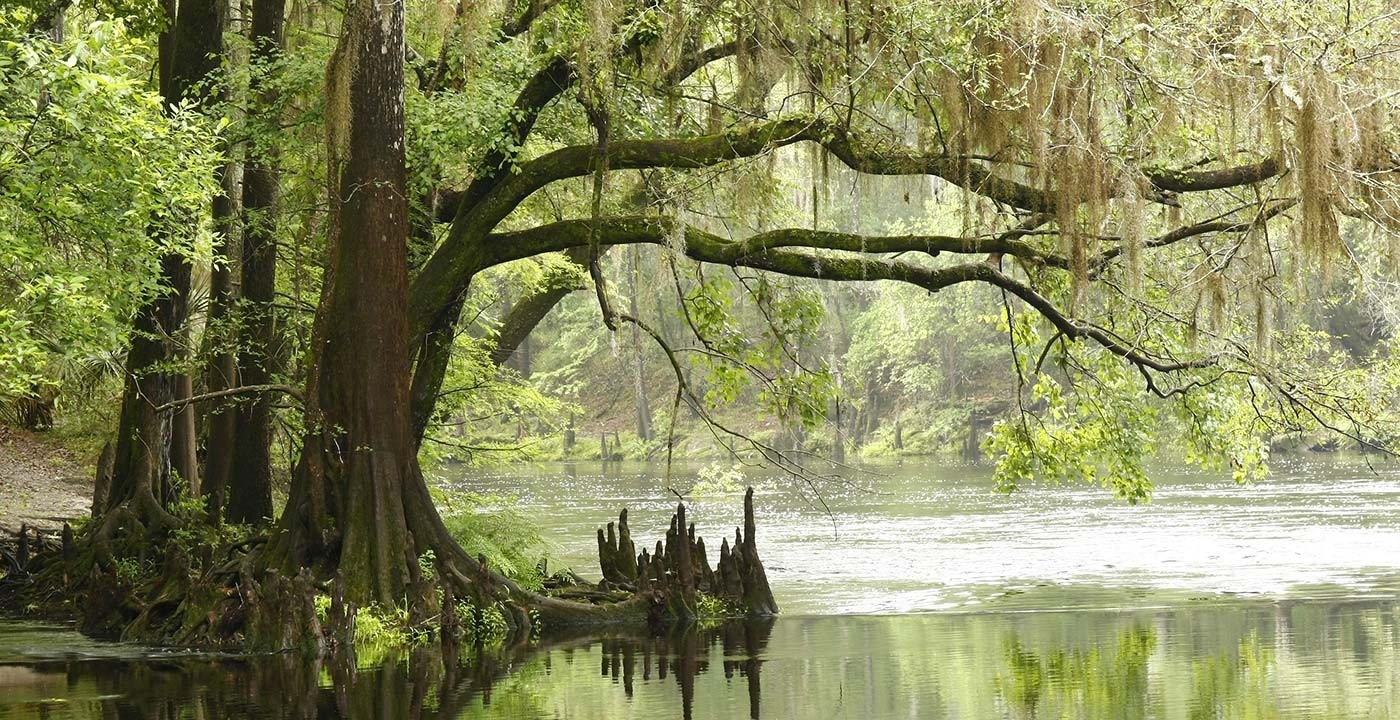
| Route 66 | Cities | Beaches |
|
Everglades |
 |
Barren |
Blue |
Miami |
Nolin |
| Atchafalaya | Big Dismal | Boundary Waters | Everglades | Okeefenokee | Pascagoula | Suwanee |
| Anyone who loves canoeing simply must make a trip to the Everglades, and it would take many trips to explore it thoroughly. This is one of America's great ecosystems. It's not the incredibnly vast system it once was. Development of Orlando and Disney World to the north, and Miami and Fort Lauderdale to the east, have cut the water flow. But it's still a vast area, unlike anything else in the world. Local ecologists refer to the Everglades as a "river of grass," a sheet of water 60 miles wide, 100 miles long and a foot deep with a drop of two inches per mile. The water bubbles to the surface in what's left of the Kissimmee Lakes. There used to be more 100 of them, where the water percolated up from the porous limestone of Central Florida. 47 of the lakes were either filled in, drained, or incorporated into scenic developments as Orlando and Disney World were built. The other 53 remain in an arc south and southeast of Orlando, where they form the headwaters of the Kissimmee River. It empties into 730 square mile Lake Okeechobee, which then discharges it into the Everglades. The water eventually empties into Florida Bay at the intersection of the Gulf of Mexico and the Caribbean Sea. | 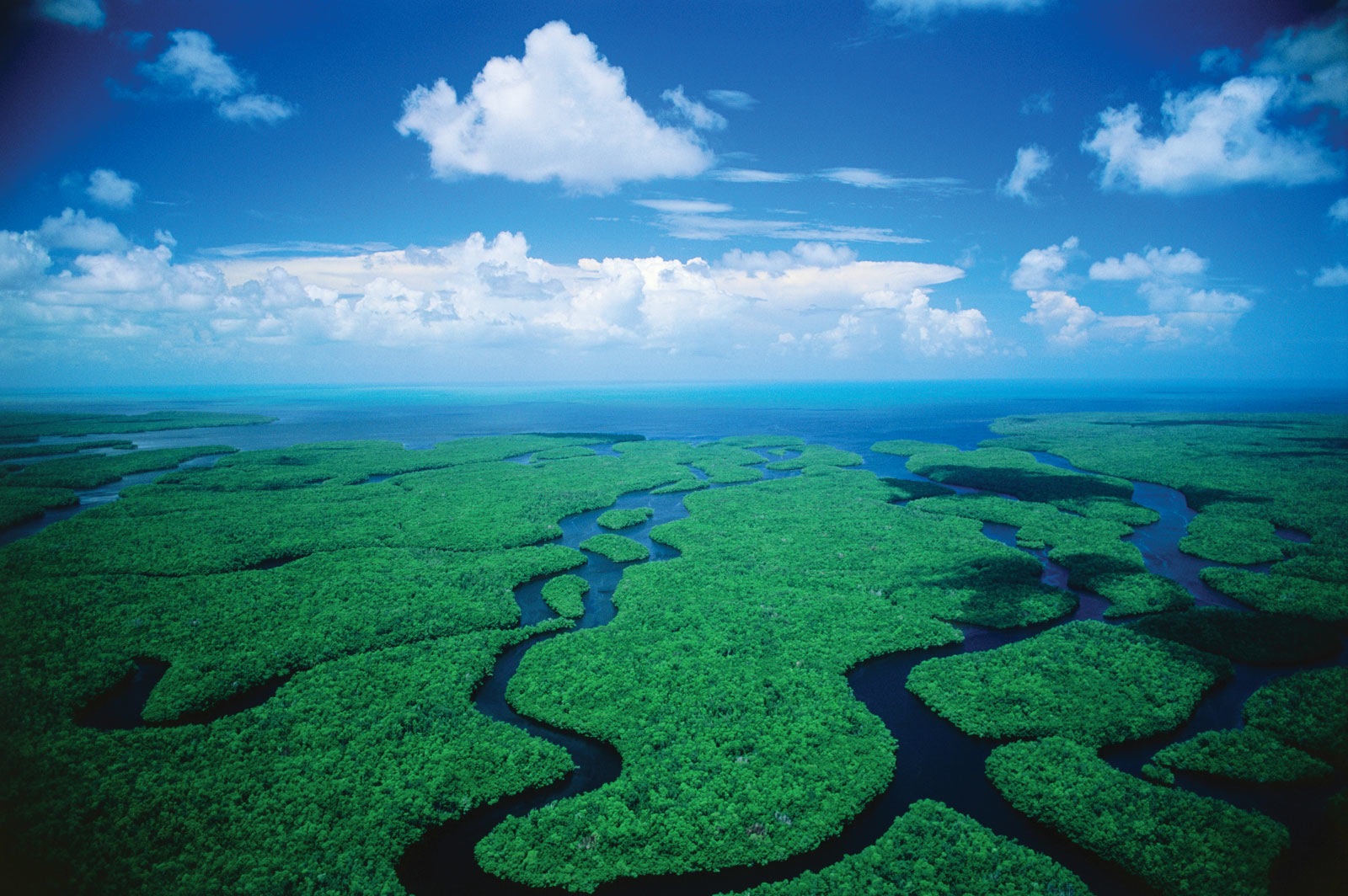 |
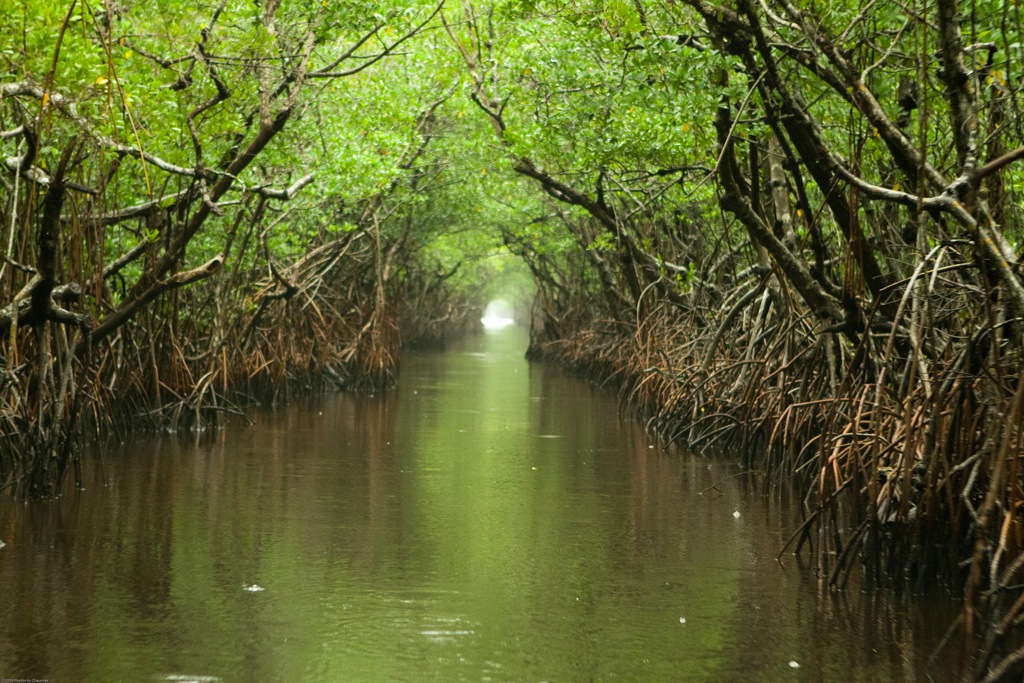 |
The Everglades is not a single ecosystem. There are Saw Grass Marshes, Pinelands, Southern Live Oak Hummocks, Cypress Swamps, Mangrove Estuaries, Wetland Prairies and various inlets of Florida Bay. Each of these is a unique system, with its own invertebrates, fish, reptiles, birds, insects, mammals, vascular and nonvascular plants. The area was declared a national park in 1937, although it took two decades of battles to halt development projects and roll some back. There are remnants of old canals, farms and roads that Nature has been reclaiming since the 1950s. Some of those canals are now used by canoeists and Manatees. The Everglades also contain Native American history, most recently of the Seminoles. In the late 1700s and 1800s many escaping slaves fled to the Everglades, joined and intermarried into the Seminole tribe. The U.S. Government waged three different wars trying to drive the Seminoles from the Everglades but never succeeded. The U.S. finally conceded defeat. Today, many Seminoles live in and around the edges of the Everglades. There is also an official Seminole Reservation, broken into five different tracts of land. Many Seminoles work as hunting, fishing, airboating and canoing guides. |
| You can approach the Everglades on your own. You can rent canoes or bring yours and take a series of one day trips in from the edges. You can even set up your own week long expedition. But we recommend signing up for a guided trip. Our favorite is Tours in The Glades, with its headquarters in Homestead. They offer a five day, four night trip which will take you from east to west, spending half a day or more in each of the seven ecosystems. The guides are trained and experienced in dealing with Bear, Pythons, Alligators, Panthers, Iguanas and Manatees, all of which you will encounter. They know how to manage the permit process, will fix your meals while you enjoy the scenery and wildlife, and will provide a continuous narrative as you paddle. Breakfasts are prepared in cast iron skillets. A lunch favorite is Alligator Burritos. Dinners are bounteous, and you watch the sun sets while eating S'Mores. You will learn tremendously more with a guide than you will ever learn on your own. Your guide can customize a trip to your specific needs, much better than you can because the guide knows little sidetrips you would never uncover. Tours in the Glades' best trip is the Flamingo - Cape Sable - Oyster Bay - Whitewater Bay route. Phone 305-248-8458. | 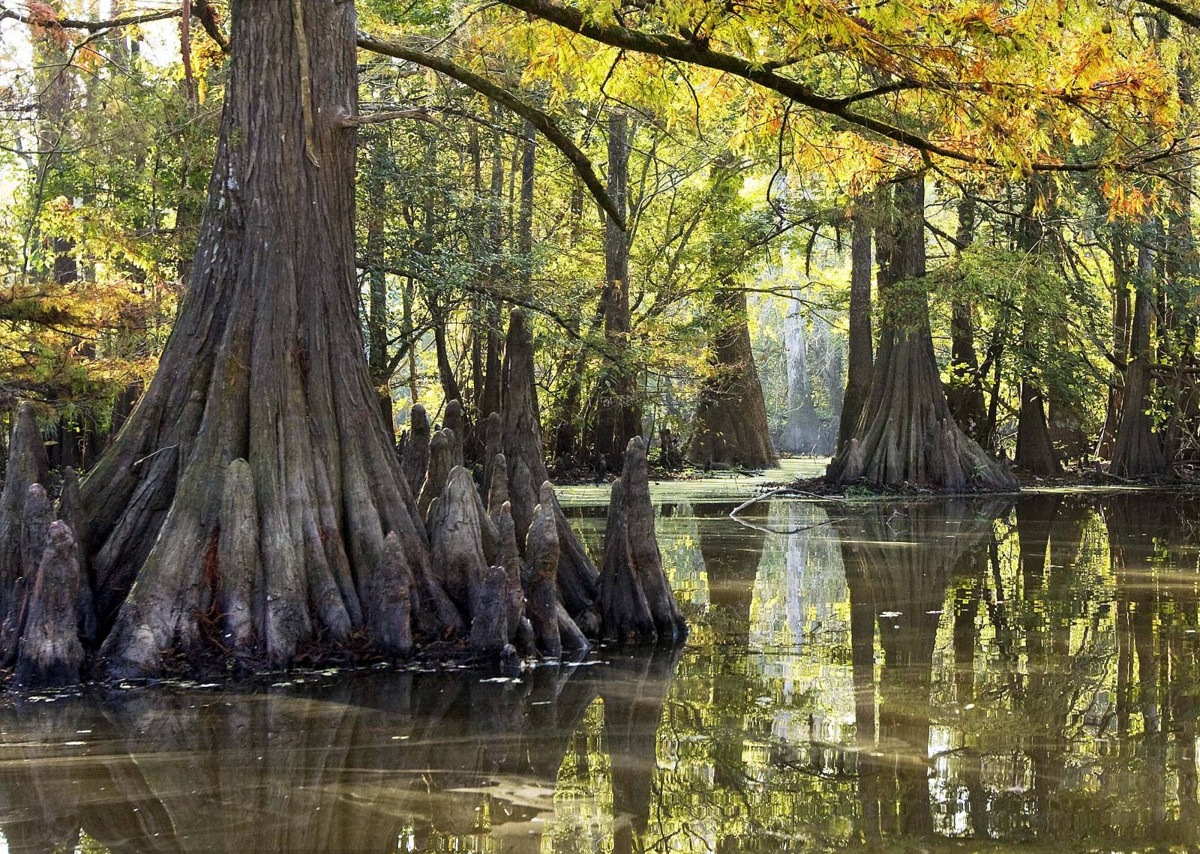 |
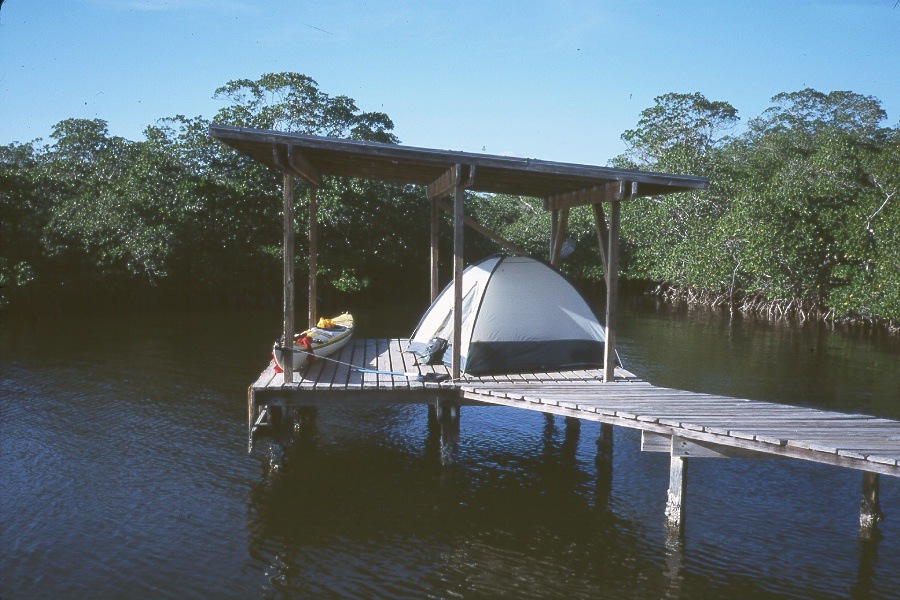 |
Since there's no dry ground to camp on, the Park Service provides camping platforms (called Chickees) throughout the Everglades. Each one includes a roof and portapotty (although in this photo the portapotty is out of sight to the right). If you're not relying on a guide service for your equipment, you'll want to put some thought into what kind of shelter to bring, since you'll be pitching your tent on hard wood. Many bring "pop tents," which do not need staking. Some bring bivuoacs and a good air mattress. Some bring camping hammocks. Even if you come in January or February, remember temperatures here are not going to be very cold at night. No open fires are allowed. You'll need a camping stove. Although you can simply tie your canoe to the pilings, most people lift theirs onto the platform for the night to avoid finding an Alligator or Python in it the next morning. We highly recommend canoeing the Everglades November through April. During the late Spring, Summer and early Fall you'll have to endure insects, heat, humidity and crowds. Furthermore, from July through September water levels are low, reducing your choice of routes and raising the risk of fires. Late Summer is also Hurricane Season. |
| The prime backcountry canoeing route through Everglades is the Wilderness Waterway. This is a 100 mile well marked water trail down the western side of the park, from Everglades City on the north to Flamingo on Florida Bay. The classic trip is seven days, but there's a five day route and a nine day route. The nine day route adds a detour down the Gulf Shore, where you paddle down along the shore and camp on the beach. Using the excellent maps provided and the plentiful directional signs, you can easily find your own way and do this trip on your own. But we still recommend one of the guide services. Sudden tidal shifts flushing in from the Gulf, unexpected weather moving in from Cuba and the Caribbean, fronts moving in from the Keys, and other unexpected problems can arise at any time. A guide knows alternate routes, alternate campsites and chickees, and while your cell phones are out of range, his radio back to base can alert you ahead of time and help in emergencies. We still think it's a luxury to have someone else handling the cooking and taking care of permits. The Everglades back country permit process is beauracratic and contrary and on your own you may not be able to piece together the permits for the route you want. The guides are experienced in navigating this process and can save you a lot of grief. Not only will the guides not take trips May through October, but the park service won't issue you permits for those months. Hordes of mosquitoes infest the back country. Hurricanes are a constant threat. And, bizarre as it may seem in a watery wilderness, fires are a major problem. The fires can start from lightning or other causes, but most of them start with careless campers. In 2013, the Oyster Bay Chickee was destroyed by a fire started by campers. When the water levels drop, the marsh grasses go dormant and dry out and the least spark can ignite a fire that takes weeks to burn out and can even block traffic on highways all the way over near Fort Lauderdale. So plan on November through April, when the bugs are gone, weather is balmy, and the intense heat and humidity are absent. |
| The Green Iguana is a very large lizard. An adult male can be six feet long and weigh 18 pounds. it looks fat and slow. Don't be misled. The iguana is very quick, fast and agile. It can leap to a branch, climb almost any surface, dive from a tree top into the water, swim very well, stay submerged for 30 minutes, whip a predator with its tail, and if cornered it can bite. An Iguana swims like a fish; it tucks its legs against its body and uses the long, thick tail for propulsion. It's a beautiful, photogenic reptile. It's mostly a vegetarian, eating leaves, fruits and flowers, but when one come across insects he's happy to snack on them. Iguanas are social. You'll usually see them basking in the sun or foraging in the trees in groups of 10-12. Iguana eggs usually hatch in April. An Iguana can live 18 - 20 years. They are thriving in the Everglades, their population actually increasing. As a visitor you'll find them fascinating, but residents around the edges of the Everglades find them annoying. Iguanas devour flowers and shrubs homeowners set in their yards. Seminoles hunt them for meat. Iguana tastes like Chicken. They seem like they'd make great pets, but they eat continually, and keeping one fed would require daily trips to the grocery and florist. | 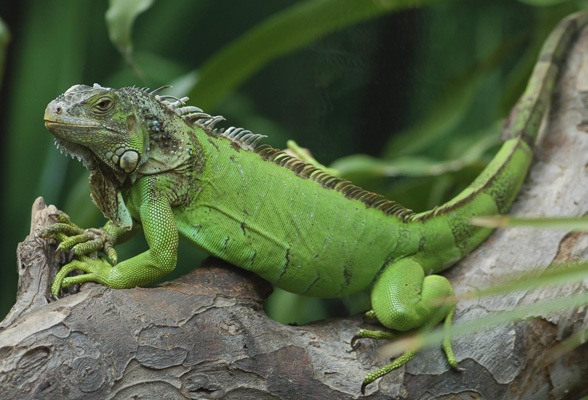 |
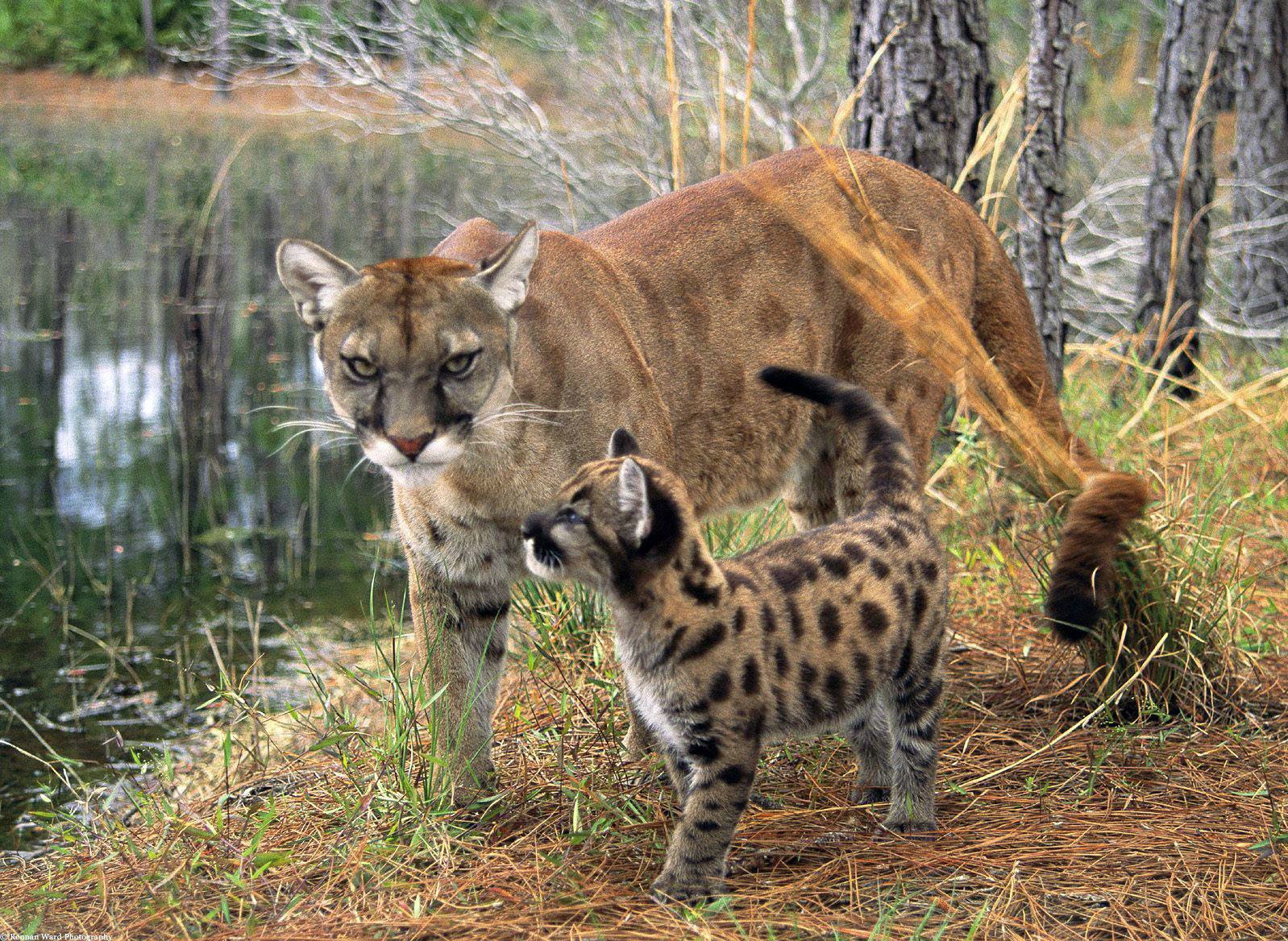 |
You'll see Florida Panthers in the Pineland and Live Oak Hummocks of the Everglades. This is a subspecies of Cougar, a cousin to the Mountain Lion, Puma and Catamount. Wildlife biologists believe there is a stable population of 160 adult males in the Everglades. Males weigh up to 160 pounds and grow to seven feet long. If you see one with spots and blue eyes it's a juvenile; as they reach puberty the spots fade and the eyes turn yellow. Notice the faded spots on the adult at left. The Florida Panther does not have the vocal chords to roar, but they bark, cry, snarl, spit and hiss as they hunt and odds are good you'll hear them from your Chickee campsites. They prefer to prey on birds, deer, rabbits and young alligators, but if those are not available they'll go after anything that moves. Ironically, large adult alligators are also the chief enemy of the Panther. |
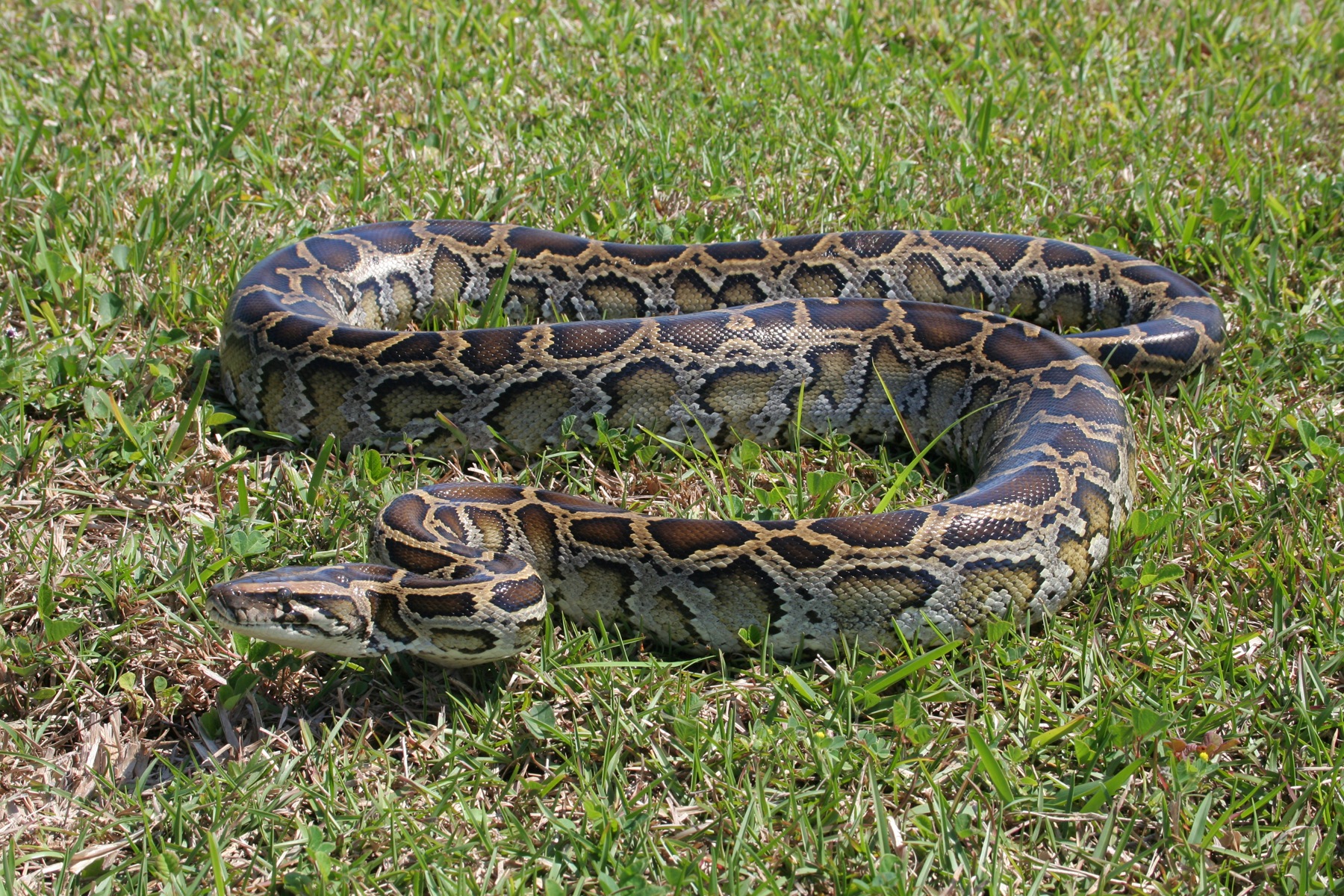 |
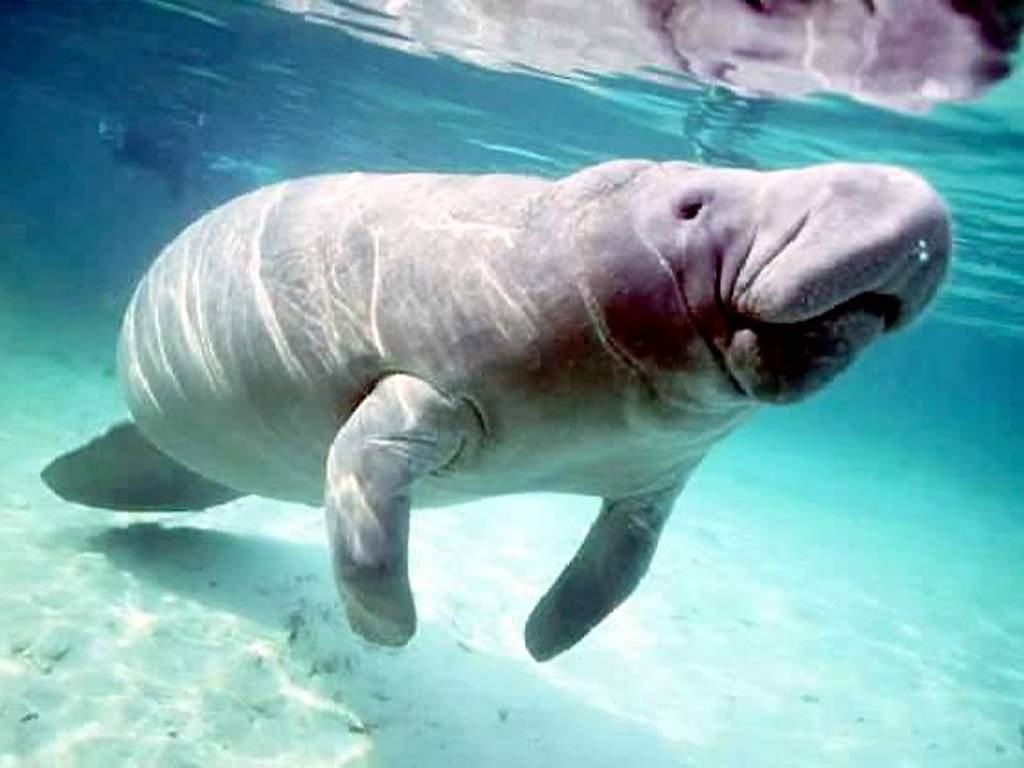 |
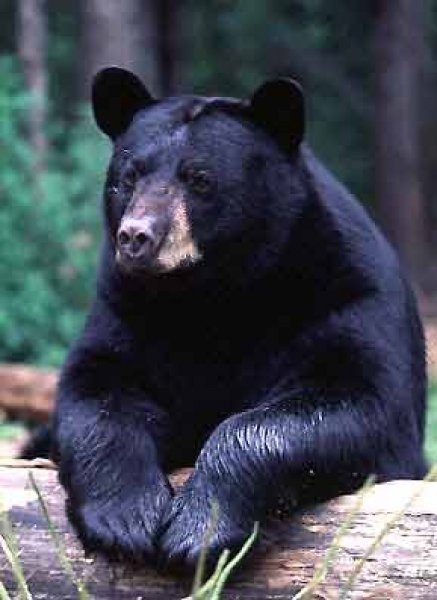 |
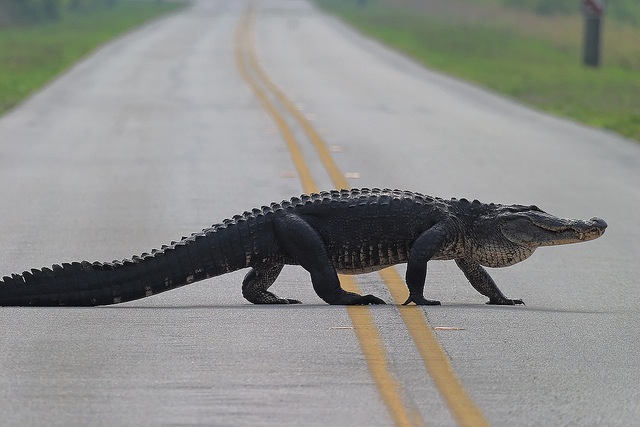 |
|
|||
|